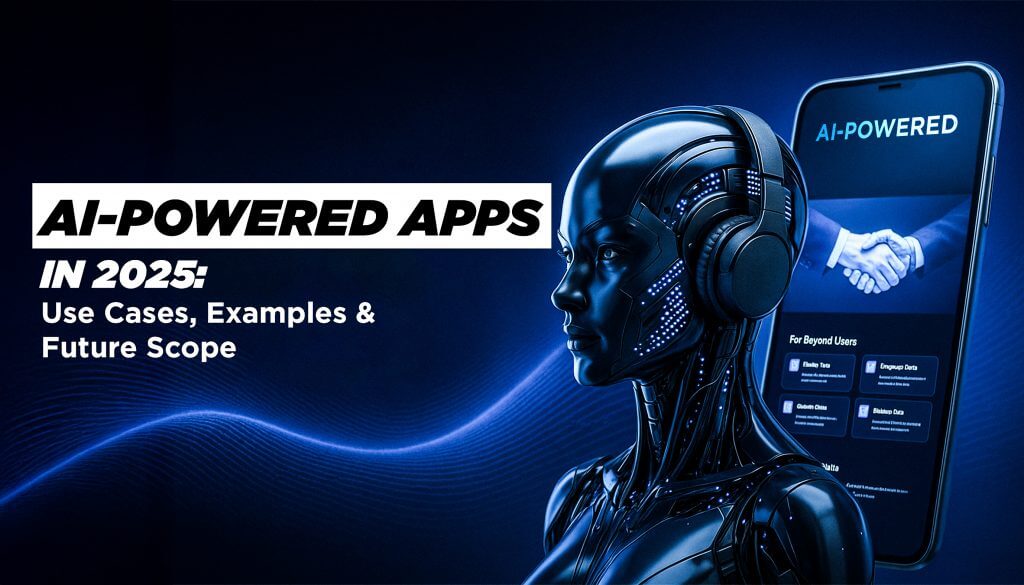Artificial Intelligence (AI) has quietly become an invisible assistant in our daily routines. Whether you’re checking your email, using your GPS, or scrolling through your favorite social media platform, AI is working behind the scenes—predicting, personalizing, and improving your digital experience. It’s no longer confined to sci-fi or big tech laboratories; AI is in our phones, homes, cars, and even our pockets.
This article explores 20 everyday apps that are powered by AI—apps most of us use without realizing just how much intelligence they pack. From voice assistants to financial apps, let’s take a look at how AI is making our lives more efficient, informed, and connected.
1. Virtual Assistants on Smartphones
How Siri, Google Assistant & Alexa Use AI
Voice assistants rely on AI to interpret voice commands, learn user habits, and provide personalized assistance. Apple’s Siri, Google Assistant, and Amazon’s Alexa use natural language processing (NLP) to understand and respond conversationally.
Voice Recognition and Smart Suggestions
Over time, these assistants learn your speech patterns, recognize accents, and even anticipate needs—like reminding you of meetings or suggesting nearby restaurants.
2. Navigation and Maps Apps
AI in Google Maps and Waze
Google Maps and Waze use AI to analyze traffic data, accidents, road closures, and construction zones. This helps provide the fastest and safest routes in real time.
Predictive Traffic and Route Optimization
These apps predict travel times based on historical data and current conditions. AI even re-routes you mid-journey if a faster option becomes available.
3. Streaming Platforms
Netflix, Spotify & YouTube Recommendations
AI tracks what you watch or listen to, how long you engage, and what you skip. Netflix uses this data to recommend movies and TV shows tailored to your taste, while Spotify crafts personalized playlists like “Discover Weekly.”
Personalized Content Delivery
By clustering users with similar tastes, these platforms use machine learning to fine-tune suggestions and keep you engaged.
4. Social Media Apps
AI in Facebook, Instagram & TikTok Algorithms
AI curates your news feed, suggesting posts, reels, or friends based on your interactions. On TikTok, the algorithm learns your interests incredibly fast to tailor your “For You” page.
Content Moderation and Feed Curation
AI also helps detect harmful content, flag fake news, and maintain safe online environments across social platforms.
5. E-Commerce Apps
AI in Amazon, eBay & Shopify
Shopping apps use AI to analyze your behavior and recommend products, optimize search results, and offer personalized deals. Amazon’s algorithm is among the most advanced in retail AI.
Personalized Shopping and Price Optimization
AI determines when to display specific prices or discounts based on user profiles, time of day, or competitor trends.
6. Food Delivery Apps
Uber Eats, DoorDash & Zomato AI Features
AI plays a role in estimating delivery times, suggesting food based on your past orders, and optimizing driver routes for efficiency.
Predictive Ordering and ETA Estimation
These apps also analyze ordering patterns to forecast busy times and restaurant prep durations.
7. Fitness and Health Apps
AI-Powered Recommendations in Fitbit, MyFitnessPal
Wearables and tracking apps collect data like steps, heart rate, or calorie intake. AI uses this to offer customized workout and diet plans.
Virtual Coaching and Behavior Tracking
AI-powered virtual trainers guide workouts and give feedback on form, duration, and intensity based on real-time performance.
8. Language Translation and Learning Apps
Duolingo, Google Translate & Grammarly
AI helps break language barriers. Duolingo adjusts difficulty based on your progress. Google Translate uses NLP to provide real-time translations. Grammarly corrects grammar while understanding context.
Real-Time Translation and Adaptive Learning
These apps adapt to your learning pace or language level and offer intelligent suggestions to accelerate mastery.
9. Camera and Photo Editing Apps
AI Features in Snapchat, Google Photos & Instagram
Snapchat’s filters, Google Photos’ face recognition, and Instagram’s auto-enhancement tools all rely on AI.
Face Detection, Filters, and Smart Albums
These apps can group photos by person, remove background objects, or apply face-altering filters with stunning accuracy.
10. Email and Productivity Apps
Gmail Smart Reply and Calendar Scheduling
Gmail uses AI to suggest quick replies and flag potential spam. Google Calendar automatically recommends meeting times.
Task Automation in Notion, Trello, and Slack
AI enhances task managers by recommending deadlines, assigning tasks, and automating workflows based on activity.
11. Ride-Hailing Apps
AI in Uber, Lyft & Bolt
These platforms use AI to calculate fares, match drivers with passengers, and determine the most efficient route.
Dynamic Pricing, Matching Riders & Drivers
Surge pricing and driver allocation are all based on real-time data analyzed through machine learning models.
12. Banking and Finance Apps
Fraud Detection in PayPal & Banking Apps
AI flags unusual spending patterns, potential phishing attempts, and unauthorized access.
AI in Budgeting Tools like Mint & YNAB
AI categorizes expenses, predicts future spending, and helps users stay on track with personalized budgets.
13. News and Aggregator Apps
Google News, Flipboard & Feedly Recommendations
AI analyzes your reading habits and suggests articles that align with your interests or current events.
Curating News Based on Reading Habits
These platforms ensure that the news you see is relevant, timely, and suited to your personal preferences.
14. Dating Apps
AI in Tinder, Bumble & Hinge Matchmaking Algorithms
AI helps filter matches by analyzing preferences, behavior, and feedback on past swipes.
User Behavior and Compatibility Analysis
Machine learning increases match quality by identifying patterns in what users like or reject.
15. Smart Home Control Apps
Nest, SmartThings, and HomeKit Automation
Smart thermostats, lights, and security systems use AI to learn user routines and adjust settings automatically.
Predictive Home Environment Adjustments
For example, your thermostat may start cooling before you arrive home, or your lights may dim based on your schedule.
16. Voice Typing and Keyboard Apps
AI in Gboard and SwiftKey Predictions
AI suggests next words, emojis, and autocorrects based on typing history.
Real-Time Spelling, Grammar, and Language Support
It also adapts to your writing style and even supports multilingual typing seamlessly.
17. Learning and Education Platforms
Khan Academy, Coursera, and AI Tutors
AI suggests courses based on learning pace and interests. Platforms adjust difficulty levels automatically.
Personalized Learning Paths
These tools track progress and offer targeted resources for improvement.
18. Mental Health and Wellness Apps
AI Chatbots in Woebot and Wysa
These apps use conversational AI to simulate therapy and offer emotional support.
Sentiment Analysis and Mood Tracking
AI tracks user sentiment over time, offering mindfulness practices or referrals when needed.
19. Security and Password Manager Apps
Face ID, Biometric Recognition
Unlocking your phone or app with your face or fingerprint is made possible by AI-powered biometrics.
AI in Password Generators and Fraud Alerts
Apps like LastPass use AI to identify weak passwords and warn users of compromised credentials.
20. Weather Apps
AI Forecasting in The Weather Channel, AccuWeather
These apps process billions of data points to deliver accurate forecasts using machine learning.
Hyperlocal Predictions and Alerts
AI pinpoints your exact location and provides weather alerts for severe conditions nearby.
Conclusion
Artificial Intelligence is seamlessly integrated into the digital tools we rely on every day. From planning your route to predicting your favorite song, AI is behind the scenes, making your life easier, smarter, and more efficient. As this technology evolves, so will the apps we use—bringing even greater levels of personalization, intelligence, and convenience to our daily lives.


